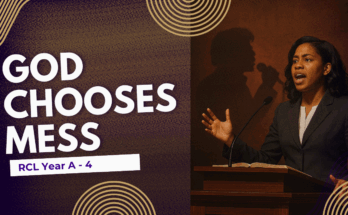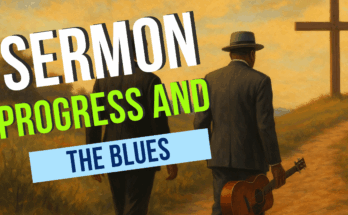As an Amazon Associate I earn from qualifying purchases.
The next pattern in Ronald Allen’s book entitled Preaching Patterns is the Moving from First Naivete’ through Critical Reflection to Second Naivete’. The idea comes from the hermeneutical theorist Paul Ricoeur. Here the sermon takes three steps.
First Naivete’
The first move in the sermon is to look at the text, doctrine, or topic under consideration in what is called a “pre-critical” way. By that we mean we simply accept the thing under consideration without question. We assume that what is presented in the doctrine or biblical text is God’s ideal without any question. You simply look at the text on its own terms and seek to understand it on its own terms.
Critical Reflection
The next step is critical reflection. Here we look for difficult places in the text. We look to see if we have any questions of the text or doctrine or practice. Does the text’s view of the world look like our view of the world? Does the text’s idea of God seem to be true to our understanding of God?
The preacher looks at the text and directly shows how the text’s world view and our common world view agrees in places and disagrees in places. It is during this phase that we seek to look at how the text points to a hermeneutic for interpreting the world.
Should We Question God?
One might think that normally you should stop there, but let us not forget that there are examples of questioning God in the text. Often these questions push us to a deeper understanding of truth. Look at how Job questioned God and came to a fuller understanding of God, if not God’s reason for allowing these things to happen to him. Look at how Habbakkuk questioned God and as a result we received the gem in the old testament namely “the just shall live by faith.” (Habbakkuk 2:4). The problem is not in the questioning, but in not being willing to listen to God when God gives us the answer.
Second Naivete’
Finally we reach the second naivete. Here we go back to the text no longer distracted by our questions that we have dealt with in the second phase. Now we can use the text to name God in today’s world just as God was named in the text’s world.
Analysis
I think that the method is valuable in that it totally sets out the Biblical world. Then it totally sets out our world. We get to understand how the two interact. Often we as preachers don’t deal with the obvious questions that people would have when dealing with a text. This method would force us to not only deal with them, but give them voice.
Finally, we end up going back to the text, after having dealt with the major questions of our contemporary age. We end up still saying that “God exists and works in the world.” But this time we say it after having critically looked at our questions. I think the method can be powerful.
Side Note
I have a side note on the method. While the original method might have been used to strip away those things in the text that our modern mindset might have problems with. For example miracles. I don’t think that is necessarily required by the method. In the hand of one who accepts miracles one will have to ultimately deal with some big questions like “why do they seemingly not happen today?” But the method doesn’t’ require us to give up these fundamental pillars of our own understanding of contemporary reality. The method just forces us to deal with the questions.
Amazon and the Amazon logo are trademarks of Amazon.com, Inc, or its affiliates.






One Comment on “Preaching from First Naivete to Second Naivete”